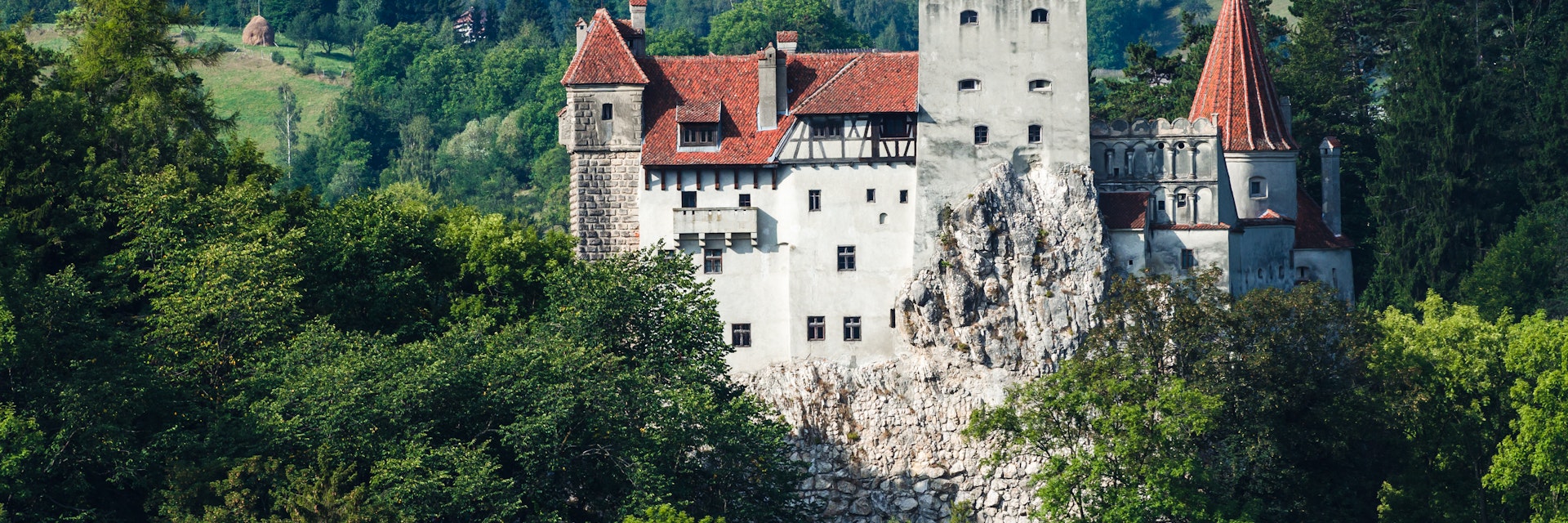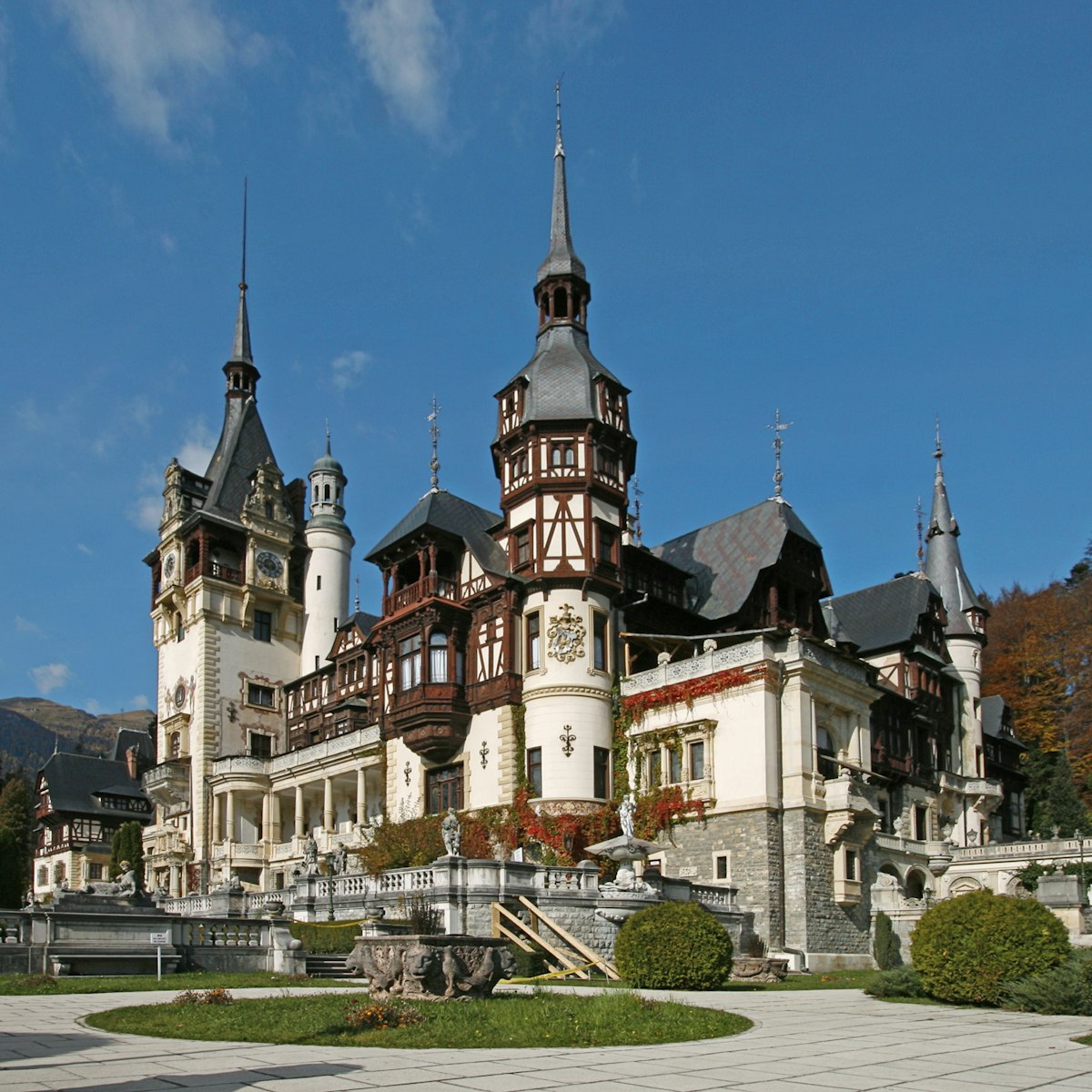Rising above the town on a rocky promontory, Bran Castle holds visitors in thrall. An entire industry has sprouted around describing it as ‘Dracula’s Castle’, though connections to either the historical Vlad Ţepeş or Bram Stoker’s fictional vampire are thin. The liberties taken with Bran’s reputation are quickly forgotten on a visit: you’ll climb up its conical towers, admiring views over thick forest, and stroll through creaky-floored rooms furnished with bearskin rugs and 19th-century antiques.
Noting Bran Pass’ strategic location, Teutonic knights built a citadel here in the 13th century. The structure was destroyed in battle, but fears of Turkish invasion led to a new citadel being built in the same place in 1382, as part of a 14th-century boom in castle-building. Bran Castle languished as an administrative building during the 18th century. The town of Bran was offered to Queen Maria of Romania in 1920, as a thank you for her efforts in uniting the country.
Indeed, you’ll learn rather more about Queen Maria than Dracula. One room exhibits a half-hearted account of Romanian vampire lore, and rather infuriatingly shoehorns together some displays on Vlad Ţepeş – popularly, ‘the Impaler’ – and author Bram Stoker.
Several displays are devoted to Maria, the castle’s former royal resident, and her belongings are lovingly displayed alongside video footage. One of the finest rooms is her husband King Ferdinand’s former bedroom, with decorated furniture and ceramic fireplaces.
Bran Castle hosts atmospheric events around Halloween; check the castle's website for details.




